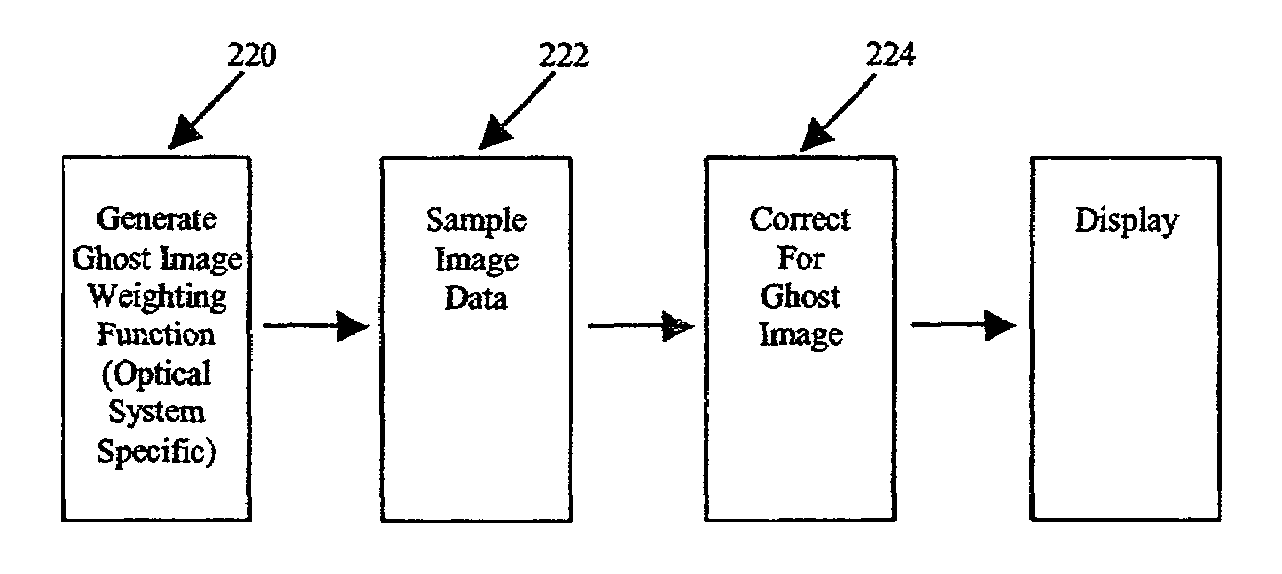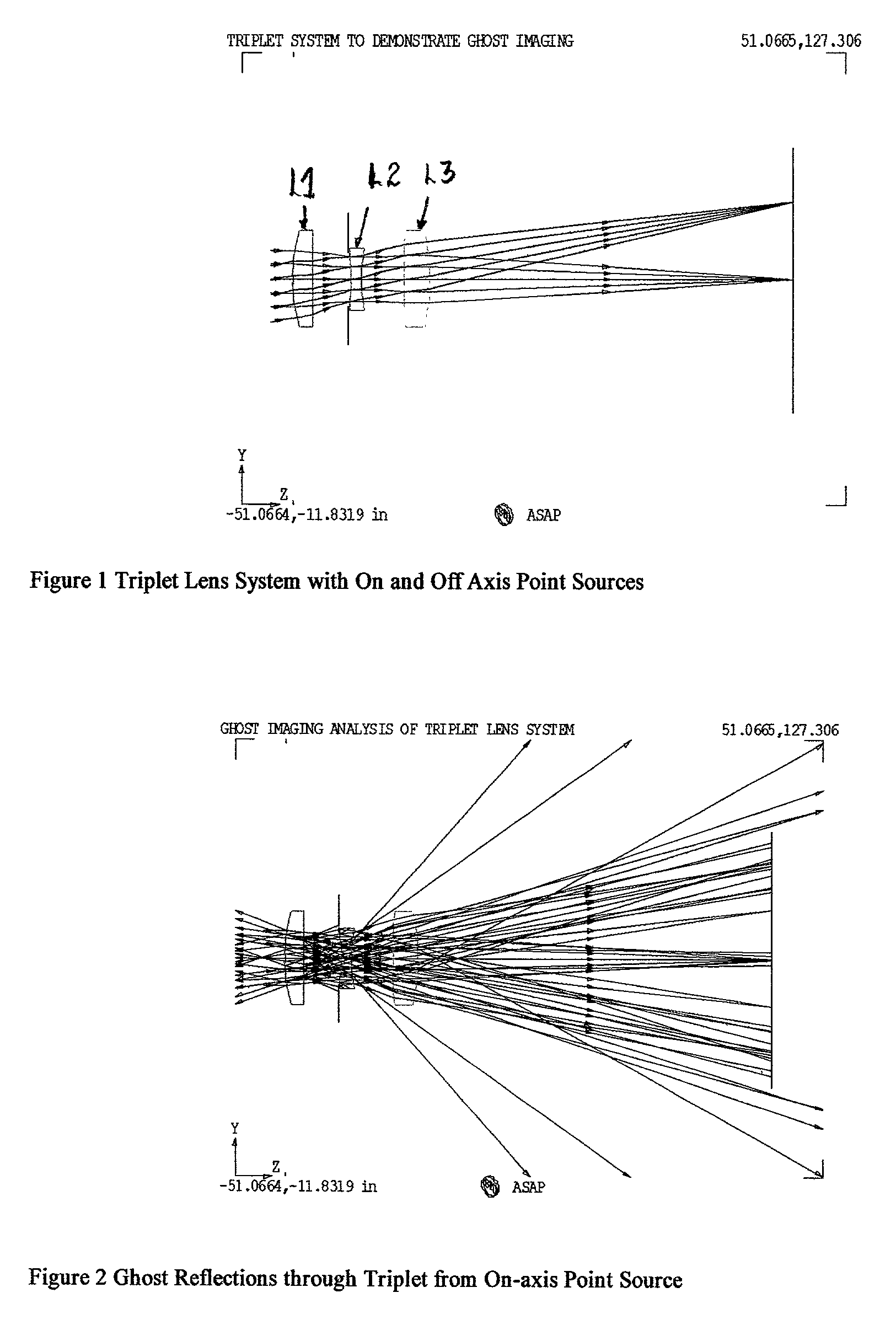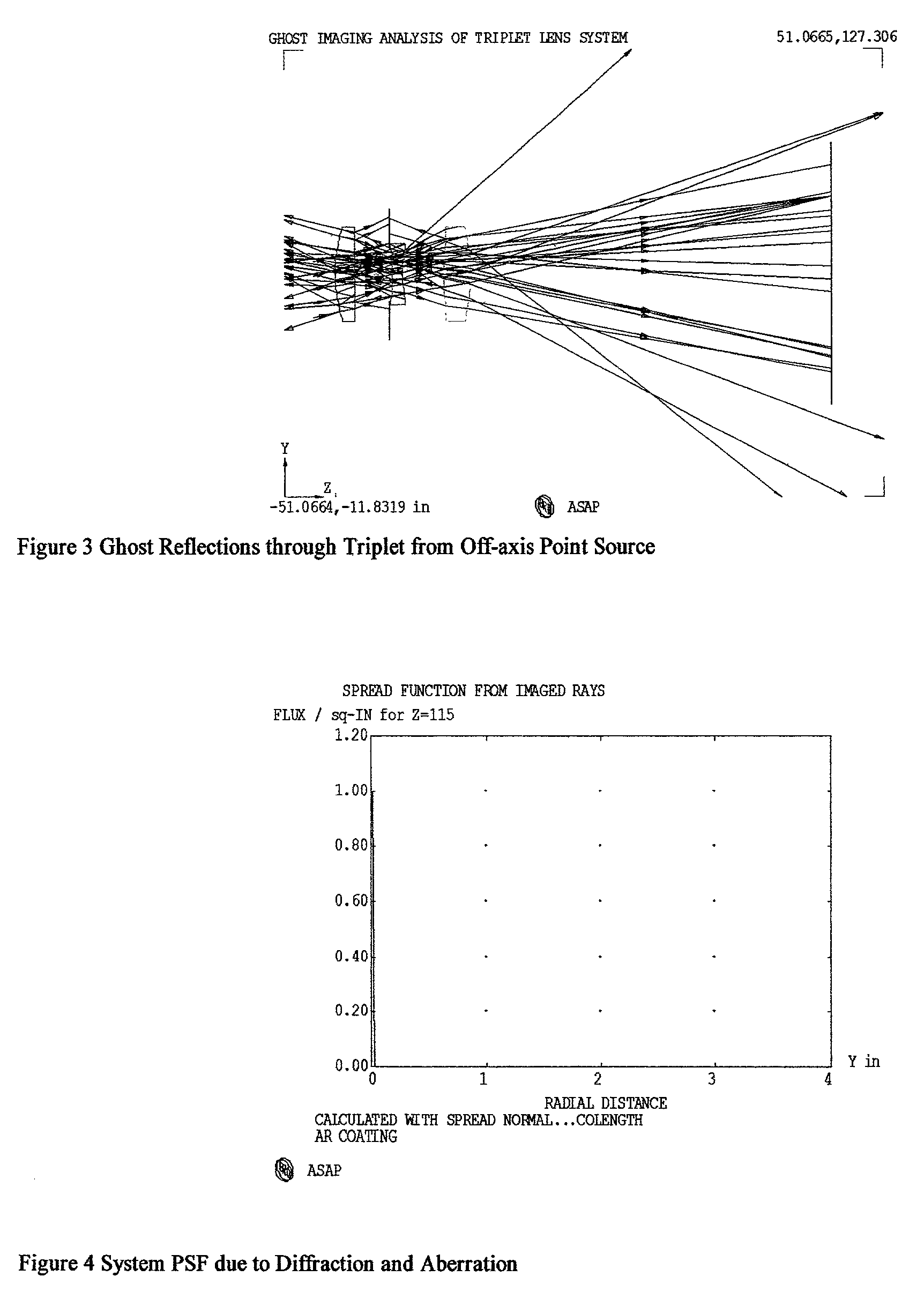Ghost image correction system and method
a ghost image and correction system technology, applied in the field of ghost image correction system and method, can solve the problems of reducing contrast, reducing signal-to-noise ratio, and reducing the minimum poor system performance and at a maximum product,
- Summary
- Abstract
- Description
- Claims
- Application Information
AI Technical Summary
Benefits of technology
Problems solved by technology
Method used
Image
Examples
Embodiment Construction
[0062]In the Introduction and Summary, it is explained that ghost images generated from planar optical surfaces in the image space after the major elements of a telecentric optical system, telecentric in image space, are shift invariant. In other words the ghost images produced by these optical elements do not change their shape with different field angles or points. The ghost image's invariance with field position will allow the ghost image to be subtracted or removed from the image of an object recorded on a digital detector such as a CCD or CMOS detector when its optical system is telecentric in image space. This subtraction may be accomplished, for example, with a removal technique using a measured ghost function germane and invariant to that particular optical system. Moreover, the principles of the present invention can also be practiced with a system that is telecentric in object space and with a system which has dual telecentricity.
[0063]A telecentric system which is shift i...
PUM
 Login to View More
Login to View More Abstract
Description
Claims
Application Information
 Login to View More
Login to View More - R&D
- Intellectual Property
- Life Sciences
- Materials
- Tech Scout
- Unparalleled Data Quality
- Higher Quality Content
- 60% Fewer Hallucinations
Browse by: Latest US Patents, China's latest patents, Technical Efficacy Thesaurus, Application Domain, Technology Topic, Popular Technical Reports.
© 2025 PatSnap. All rights reserved.Legal|Privacy policy|Modern Slavery Act Transparency Statement|Sitemap|About US| Contact US: help@patsnap.com



